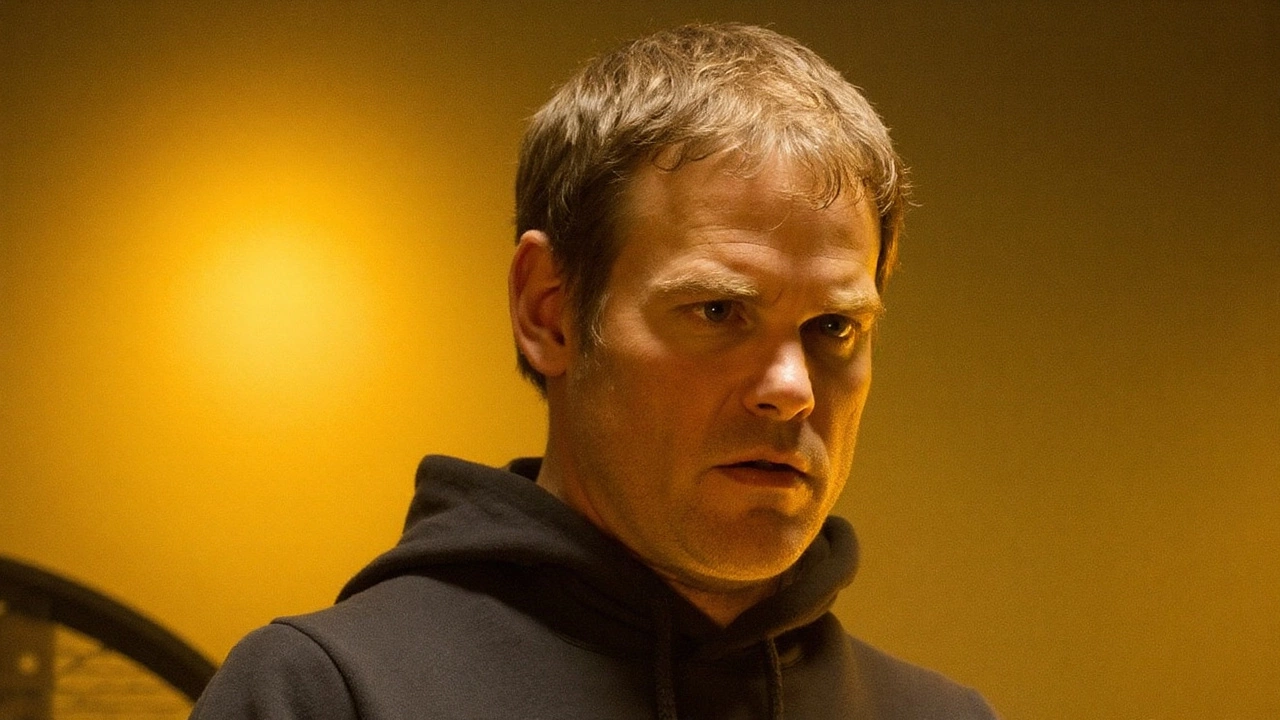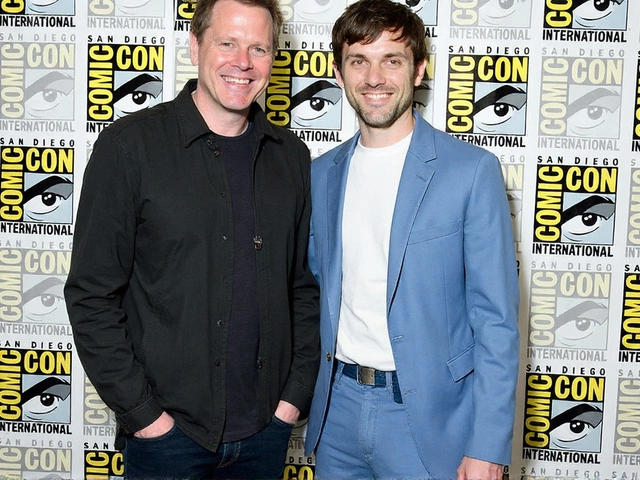In the space of one tense hour, the Dexter Resurrection finale delivered three things fans crave and rarely get in one place: a clean takedown, a pile of concrete answers, and a parting shot that dares the story to continue. It’s a violent, intimate ending that doesn’t flinch from the mess left behind.
Leon Prater’s fall, the vault of horrors, and the answers buried inside
Leon Prater was always headed toward a wall; the finale just sped up the crash. The tech billionaire’s obsession with serial killers mutated from collector’s itch to open bloodlust the minute he shot Angel Batista four times in the back in episode 9. That act wasn’t just a line crossed; it was the point of no return. By the finale, Prater isn’t hiding what he is. He spots Harrison in the crowd at his own fundraiser, shuts down cameras, and demands a gun. He’s not calculating anymore. He’s cornered, and dangerous.
Dexter plays the one card Prater isn’t ready for: time. He talks, distracts, calibrates the room. And for once, the kill isn’t all Dexter. He signals Harrison, who uses the ‘protection’ Dexter pressed on him earlier—a syringe loaded with sedative. The move is quick and clinical. Prater slumps, the room exhales, and then Dexter shifts into the phase he knows too well.
This kill looks like a classic Morgan special—plastic, precision, purpose—right up to the moment it doesn’t. Dexter picks up Harold Shipman’s scalpel, a blade with its own grim history, and ends Prater with a single, merciful thrust. No monologue. No flourish. And crucially, no trophy. He looks at the blood slide case, a ritual that has defined him for years, and walks away from it. ‘I keep trophies to remember, and I don’t want to remember you,’ he says. It’s one sentence, but it lands like a confession. Prater isn’t worthy of the shrine. He’s not a ghost Dexter wants in his head.
Then Dexter does something cruel and, in its own way, public-interest. He trips the vault alarm and exposes Prater’s private museum to everyone in earshot—law enforcement, guests, New York’s monied class. In minutes, the room that used to house the city’s most connected donors becomes a crime scene, an evidence trove, and a reckoning.
Inside, detectives Claudet Wallace and Melvin Oliva stare down the real Prater for the first time. The curated masks and clippings make it plain: the philanthropist they partnered with was a predator and an archivist of pain. That’s a professional gut punch and a political mess. They weren’t complicit, but they were close, and proximity stings. For a police department already stretched, the vault isn’t just a horror; it’s a map—timelines, patterns, and names that may solve cases they’d written off as dead ends.
Buried in that paperwork is the reveal the season kept baiting: the identity of the New York Ripper. The files point to Don Framt, not Blessing Karma, not Oliva, not any of the easy misdirects that set online theories ablaze the past few weeks. It’s not elegant. It’s evidence—dates, targets, the trail that ties back. The show doesn’t milk it. It treats the reveal like a case should end: with proof, not vibes.
The fallout doesn’t stop with headlines. Harrison, who’s been living under reporters’ side-eye and cops’ suspicion, finally gets daylight. The finale doesn’t invent some miracle alibi; it shows the simplest thing—evidence clears him, and behavior matches innocence. He helped stop Prater. He didn’t start any of it. That opens space for something the show has often rushed past: father and son actually breathing the same calm air for a minute.
And Batista. The series doesn’t erase his death or skirt past it with a wink. Dexter returns to the vault to say goodbye to a body that once belonged to a colleague, a friend, a man who believed in due process more than vengeance. It’s quiet. No sermon, no strings. Just a moment that spells out what Prater took from a city and from Dexter’s past.
When the sirens fade and the paperwork begins, the board looks like this:
- Leon Prater: dead, his empire of respectability wrecked in public.
- The vault: seized, cataloged, and likely to feed multiple prosecutions.
- New York Ripper: identified as Don Framt in Prater’s records.
- Harrison: cleared, and not just legally—emotionally lighter, too.
- Wallace and Oliva: hardened by the betrayal, and now sitting on career-making evidence.
- Dexter: alive, ritual bent but not broken, thinking about the next move.
If there’s a moral thread, it runs through that trophy line. Dexter has always curated his monsters. He makes order out of chaos with slides and codes, a museum under glass. Refusing to memorialize Prater is Dexter drawing a chalk line between predators who hide behind systems and the twisted logic he’s used to justify his own hunts. It’s not redemption; it’s a boundary. Small, but real.
Harrison’s role in the takedown is framed like practical mentorship—use the syringe, stay out of the line of fire—but it also reveals a fork in the road for both of them. The kid leans into his father’s plan, not because he shares the itch, but because he trusts him. That matters. For a show that lives with the phrase ‘Dark Passenger,’ the finale suggests something less grand and more human: some urges aren’t destiny, and some habits can be broken on purpose.

The curtain call that isn’t, and the road that points back to Miami
The last image is theatrical on purpose: Dexter’s bow in front of the Statue of Liberty, a goodbye that plays like a full-stop for the franchise. It’s tidy. It’s iconic. But look at the edges and you see the writers leaving the door cracked. The season ends with Dexter imagining daylight in a familiar place: Miami. Sun, sweat, and the precinct that built his legend. If he believes the dust in New York has settled, that return suddenly seems plausible. Dangerous, but plausible.
Why dangerous? Because Miami isn’t just palm trees and lab coats for Dexter. It’s a city full of people who know his tells, even if they don’t know the whole truth. Joseph Quinn is teased as a looming problem, a cop with a short fuse and a long memory. Put him at the tip of a new Miami Metro squad, and you’ve got exactly the kind of pressure that makes Dexter sloppy. The finale doesn’t need to spell out the chase; it just needs to show us the pieces lining up.
If the franchise takes that path, the tension writes itself. Harrison back in Miami means schools and beaches and ghosts. It also means the old rituals will tug at Dexter harder. The code doesn’t retire just because the zip code does. And if Quinn starts connecting the dots—Batista’s killing, Prater’s exposure, the scent of a vigilante in two cities—the cat-and-mouse game could turn personal fast.
There’s also a tonal shift baked into the setup. New York in Resurrection felt tight and vertical—skyscrapers, charity galas, money as mask. Miami is heat and sprawl, temptation right there in the daylight. Dexter’s earlier life thrived in that brightness because he could hide in plain sight. Coming back now, with a son who sees him clearly and a trail that crosses state lines, turns the same playground into a minefield.
The finale quietly prepares for that by resetting the board around Dexter, not just ahead of him. Charley chooses her mother and leaves the city—a personal decision that strips away one more anchor holding Dexter in New York. Wallace and Oliva, having stared at Prater’s vault of nightmares, are likely to spend months in the clean-up. That means fewer eyes on Dexter in the short term and a cold-case backlog about to warm up. Meanwhile, the city’s elite—donors, partners, board members—will spend the next year pretending they never saw Prater cut those checks. Publicly, there will be distance. Privately, phones will be wiped, statements rehearsed, lawyers retained.
That kind of institutional self-preservation is exactly the environment where Dexter’s code thrives: monsters hiding behind rules, process moving just a little too slow, victims falling through cracks no one wants to widen. If he heads back to Miami, he’ll bring that sharpened sense of mission with him, minus the urge to turn every victory into a keepsake. The trophy case is closed—for now. The hunt isn’t.
As for the New York Ripper reveal, naming Don Framt does more than end a guessing game—it reframes the season’s puzzle. The misdirection around Blessing Karma and the sideways glances at Oliva weren’t just fan bait; they were a reminder that evil often looks like the person you don’t clock on your first pass. The show resists the neat twist where the killer is the cop or the closest friend. It makes the answer dull in the best possible way: provable. That makes the win stick.
What comes next depends on how much peace Dexter can stand. The finale shows he can still improvise under pressure, still carry out the code without bathing in ritual, and still let someone in—Harrison—without breaking the whole machine. It also shows the cost. Batista’s death is a scar that won’t fade. The bow at the harbor reads like acceptance, not absolution.
So, where does that leave the fan in week one after the credits? With closure that feels earned, and with maps in two directions. Follow Wallace and Oliva through the vault, and you get a procedural that could fuel a season on its own—cases solved by a dead man’s scrapbook. Follow Dexter south, and you get the story of a hunter returning to the jungle that taught him how to stalk. Either way, the show didn’t just end a chapter. It quietly set the next one on the table and walked away before anyone could say no.
One last note about that syringe. It’s a small prop with big meaning. Dexter didn’t hand Harrison a knife; he handed him a way out of a violent choice. Sedation is control without carnage. It’s the closest thing this world has to harm reduction. If the series continues, watch for that detail. It marks the line Harrison won’t cross, and the line Dexter is testing in himself—less blood, more intention. That’s not a cure. But it’s a direction.
For now, New York belongs to the evidence techs and the press briefings. Miami, if it’s next, belongs to old debts and new rules. And Dexter, who just refused to keep one more monster in a slide, may finally be ready to stop memorializing the past and confront what’s waiting in the sun.

